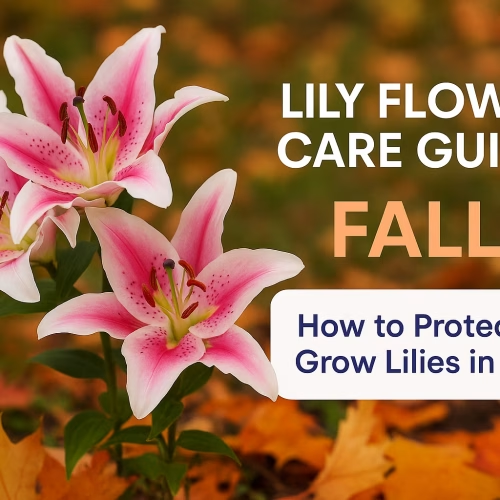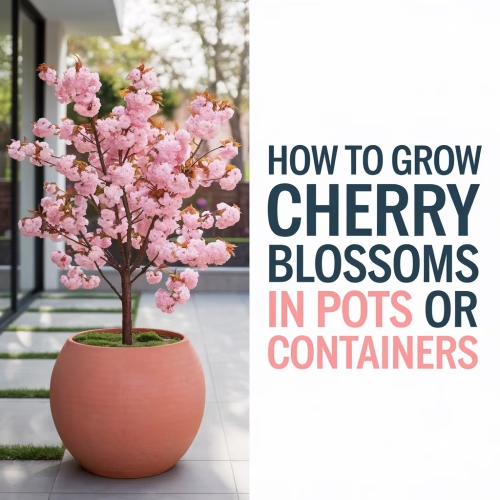Tulip Care Tips: How to Keep Your Flowers Healthy and Blooming
There’s something absolutely magical about tulips. Maybe it’s their vibrant colors that brighten even the dreariest spring day, or perhaps it’s the way they elegantly bow their heads as if whispering secrets to the garden. I still remember the first time I planted tulip bulbs in my backyard—I was equal parts excited and terrified that I’d somehow mess it up. Fast forward to today, and I’ve learned that caring for these gorgeous blooms is much simpler than you might think.
Whether you’re growing tulips in your garden, enjoying them in a vase, or planning your first tulip bed, understanding proper tulip care tips can make all the difference between flowers that fade quickly and blooms that bring joy for weeks. In this comprehensive guide, I’ll share everything I’ve learned about keeping tulips healthy, vibrant, and absolutely stunning.
Key Takeaways
Understanding Your Tulips: The Foundation of Great Care
Before diving into specific tulip care tips, it’s important to understand what makes these flowers tick. Tulips are perennial bulbs native to Central Asia, which means they’re naturally adapted to specific growing conditions. They thrive in areas with cold winters and warm, dry summers—think Mediterranean-style climates.
The beauty of tulips lies in their diversity. With over 3,000 registered varieties, you can find tulips in virtually every color except true blue. From elegant single blooms to frilly parrot varieties, each type has slightly different care requirements, but the fundamentals remain the same.
The Tulip Life Cycle
Understanding the tulip’s natural rhythm helps you provide better care:
Essential Tulip Care Tips for Garden-Grown Blooms
1. 🌍 Choosing the Perfect Location
Location is everything when it comes to tulip success. I learned this the hard way when my first batch of tulips barely bloomed because I planted them in a shady corner. Here’s what your tulips need:
Sunlight Requirements:
Soil Conditions:
Pro tip: If you have heavy clay soil, amend it with compost and sand, or consider raised beds. Tulips absolutely despise sitting in water!
2. 💧 Watering: Finding the Sweet Spot
Watering tulips is an art form. Too much water and the bulbs rot; too little and they won’t develop properly. Here’s my approach:
During Active Growth (Spring):
After Blooming:
During Dormancy (Summer):
Just like maintaining healthy habits in your daily routine, consistency is key with tulip watering schedules.
3. 🌱 Fertilizing for Fabulous Blooms
Proper nutrition is one of the most overlooked tulip care tips. Here’s what works:
At Planting Time:
Spring Feeding:
Post-Bloom Nutrition:
| Growth Stage | Fertilizer Type | Application Rate |
|————–|—————-|——————|
| Planting | Bone meal or bulb food | 2 tbsp per hole |
| Spring emergence | 9-9-6 balanced | 1 cup per 25 sq ft |
| Post-bloom | 0-10-10 low nitrogen | ½ cup per 25 sq ft |
4. ✂️ Deadheading and Foliage Management
This is where many people go wrong, and I’ll admit I did too at first. Here’s the proper approach:
Deadheading:
Foliage Care:
I know those yellowing leaves aren’t the prettiest sight, but think of them as an investment in next year’s blooms. To hide them, I plant late-spring perennials nearby that grow up and camouflage the dying tulip foliage.
5. 🐛 Pest and Disease Prevention
Healthy tulips are generally pest-resistant, but issues can arise. Here are common problems and solutions:
Common Pests:
Disease Issues:
Prevention is always easier than treatment, much like how taking care of your overall health prevents bigger issues down the road.
Tulip Care Tips for Cut Flowers
Bringing tulips indoors is one of life’s simple pleasures. Here’s how to make those cut blooms last:
🌸 Cutting Techniques
Best Time to Cut:
Cutting Method:
💐 Vase Care for Maximum Longevity
Initial Preparation:
Daily Maintenance:
Special Tips:
Expected Vase Life: 5-12 days depending on variety and care
Creating a beautiful tulip arrangement can be as mindful and intentional as romanticizing your daily life—it’s about finding joy in the simple moments.
Seasonal Tulip Care Tips
🍂 Fall: Planting for Success
Fall is tulip planting season in most climates. Here’s your action plan:
Timing:
Planting Depth and Spacing:
Soil Preparation:
❄️ Winter: The Cold Treatment
Winter is when the magic happens underground. Tulips require cold temperatures to bloom:
Natural Cold Treatment:
Warm Climate Solutions:
Winter Protection:
🌼 Spring: Active Growth and Blooming
Spring is showtime! Here’s how to support your blooming tulips:
Early Spring:
During Bloom:
Post-Bloom:
☀️ Summer: Dormancy Period
Summer is rest time for tulip bulbs:
Care Requirements:
Planning Ahead:
Advanced Tulip Care Tips for Experienced Gardeners
🔄 Encouraging Perennialization
While many gardeners treat tulips as annuals, certain varieties and care techniques can encourage repeat blooming:
Best Perennial Varieties:
Techniques for Repeat Blooms:
🌡️ Forcing Tulips Indoors
Want tulip blooms in winter? Try forcing:
The Process:
Best Forcing Varieties:
🎨 Color Combinations and Design
Strategic planning creates stunning displays:
Monochromatic Schemes:
Complementary Pairings:
Layering Strategy:
Taking time to plan your tulip displays can be as creative and fulfilling as creating a vision board for your goals.
Troubleshooting Common Tulip Problems
🤔 Why Aren’t My Tulips Blooming?
Possible Causes:
Solutions:
😟 Tulips Are Flopping Over
Causes:
Solutions:
🍃 Leaves Are Yellowing Early
Possible Issues:
Action Steps:
Creating a Tulip Care Routine
Consistency is everything with tulip care. Here’s a simple routine to follow:
Weekly During Growing Season:
Monthly Tasks:
Seasonal Checklist:
Building these routines into your lifestyle, much like developing self-love habits, creates lasting success.
The Mindful Approach to Tulip Care
Here’s something I’ve learned over years of gardening: caring for tulips is about more than just following rules. It’s about observation, patience, and connection with nature.
When I’m tending to my tulips, I’m not just completing tasks—I’m practicing mindfulness. I notice the subtle changes in leaf color, the way morning dew clings to petals, the first signs of emerging buds. This attention to detail not only makes me a better gardener but also grounds me in the present moment.
Tulip care has taught me:
These lessons extend far beyond the garden. Just as we nurture tulips, we must nurture ourselves. Taking time for activities that restore us—whether that’s getting better sleep, journaling for self-growth, or developing a skincare routine—is just as important as the care we give our gardens.
Sustainable Tulip Care Practices
As gardeners, we have a responsibility to care for our environment. Here are eco-friendly tulip care tips:
Sustainable Practices:
Water Conservation:
Supporting Biodiversity:
Conclusion: Your Journey to Tulip Success
Mastering tulip care tips isn’t about perfection—it’s about understanding what these beautiful flowers need and doing your best to provide it. From proper planting depth to patient post-bloom care, each element contributes to healthy, vibrant blooms that brighten your spring.
Remember these key principles:
Whether you’re growing tulips in your garden or enjoying cut flowers in your home, these care tips will help you succeed. Start small if you’re a beginner—even a single pot of tulips can bring immense joy. As you gain confidence, expand your tulip adventures with new varieties and techniques.
Your Next Steps:
The beauty of tulips is that they reward even modest efforts with spectacular blooms. So grab those bulbs, get your hands in the soil, and prepare for the magic of spring. Your future self (and your garden) will thank you.
Happy gardening! 🌷
—
SEO Meta Title and Description
Meta Title: Tulip Care Tips: Keep Your Flowers Blooming in 2025
Meta Description: Discover essential tulip care tips for healthy, vibrant blooms. Learn proper watering, feeding, planting depth, and seasonal care for stunning tulips.
—
Image Prompts
IMAGE_PROMPT_1: Cover image in 1536×1024 landscape format. Beautiful garden scene with vibrant pink, red, and yellow tulips in full bloom in the foreground, soft-focus spring garden background with gentle sunlight. Text overlay on the right side reads “Tulip Care Tips: How to Keep Your Flowers Healthy and Blooming” in bold, modern sans-serif typography. “Tulip Care Tips” in large navy blue bold text, “How to Keep Your Flowers” in white medium text, “Healthy and Blooming” in orange bold text. Clean, airy composition with plenty of negative space. Professional, Pinterest-worthy aesthetic with soft pastel background tones.
IMAGE_PROMPT_2: Infographic in 1536×1024 landscape format showing “The Tulip Life Cycle” with six circular icons arranged in a clockwise pattern. Each circle contains a simple illustration and label: Fall Planting (bulb in soil), Winter Cold Period (snowflake and roots), Spring Emergence (green shoots), Blooming Phase (open tulip flower), Post-Bloom (tulip with leaves), Summer Dormancy (dormant bulb). Center text reads “The Tulip Life Cycle” in bold navy typography. Soft cream background, icons in coordinating colors of green, blue, pink, and orange. All text clearly readable, perfectly centered, nothing cut off at edges.
IMAGE_PROMPT_3: Square 1024×1024 image showing a beautiful arrangement of fresh-cut tulips in various colors (pink, white, red, purple) in a clear glass vase on a white marble countertop. Morning sunlight streaming through a nearby window creates soft shadows. Clean, minimalist aesthetic with a few fallen petals artfully placed nearby. Bright, fresh, Instagram-worthy composition with natural lighting.
IMAGE_PROMPT_4: Landscape 1536×1024 infographic titled “Tulip Watering Guide” at the top in bold navy text. Three columns showing different seasons: Spring (watering can icon, “1 inch per week, water when top inch is dry”), Summer (crossed-out water drop, “No watering during dormancy”), Fall (light rain icon, “Minimal watering after planting”). Each section has clear icons, readable text, and color coding – green for spring, yellow for summer, orange for fall. Soft white background, all elements perfectly aligned and centered within image boundaries.
IMAGE_PROMPT_5: Square 1024×1024 image showing hands planting tulip bulbs in rich, dark soil. Close-up view of several brown tulip bulbs being placed pointed-end-up in prepared holes. Gardening tools (small trowel, bone meal package) visible in background. Warm, earthy tones with natural outdoor lighting. Educational and inspiring composition showing proper planting technique.
IMAGE_PROMPT_6: Landscape 1536×1024 comparison chart titled “Common Tulip Problems & Solutions” in bold text at top. Three rows showing: 1) “Not Blooming” with wilted tulip icon and solutions listed, 2) “Flopping Over” with drooping tulip icon and fixes, 3) “Early Yellowing” with yellowing leaves icon and remedies. Each problem has 3-4 bullet point solutions in clear, readable text. Color-coded sections with icons – red for problems, green for solutions. Professional infographic style with all text perfectly visible and centered, nothing cropped at edges.




